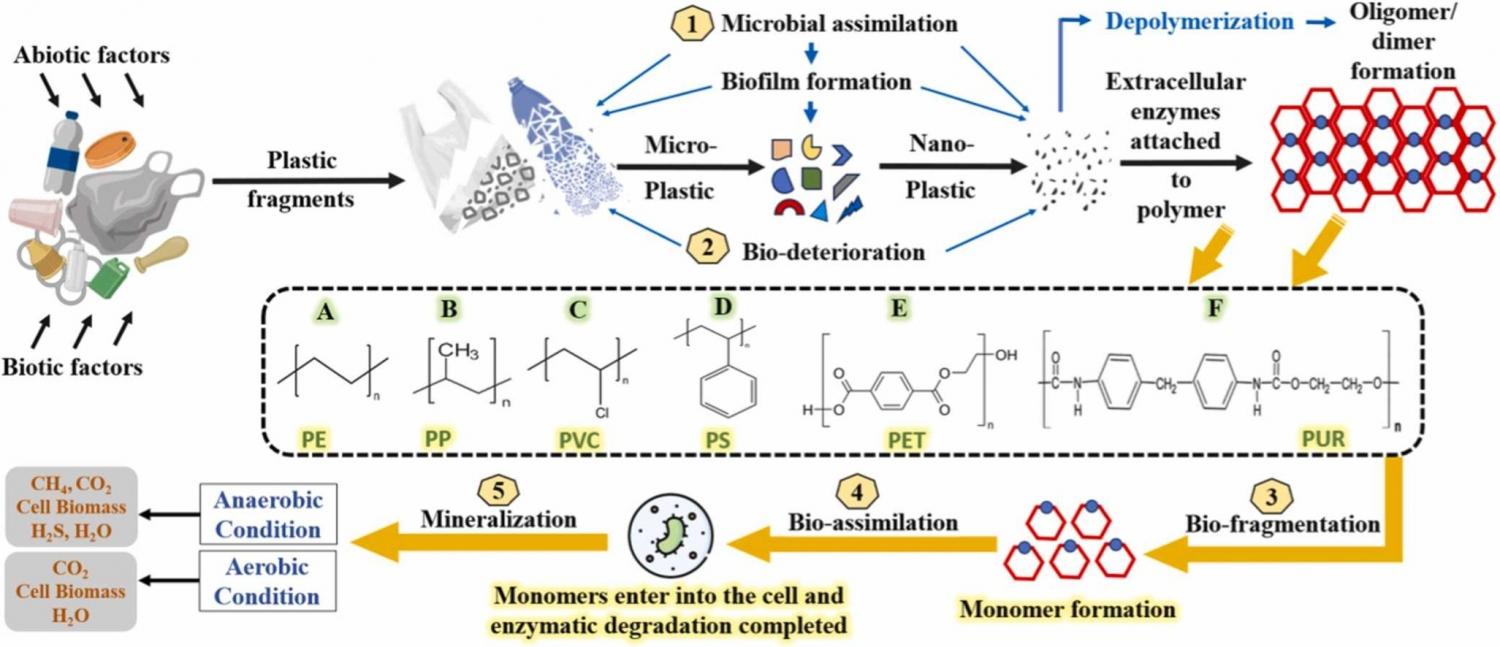
The most significant threat to environmental components is the alarming increase of micro- and nano- plastics (MNPs) within the ecosystem. In addition to being produced by breaking larger plastic into fragments, MNPs are also produced for commercial uses, particularly packaging. MNPs exposure has infiltrated the food chain, environment, agroecosystems, human body, and animals. Even though technical processes to characterize MNPs are still emerging, exploring innovative remediation methods is crucial. Among the several remediation techniques available to date, microbial remediation showed better promise to degrade or sustainably remove MNPs from the environment. Microorganisms have evolved genes that impact changes in plastic pollutants under stable ecophysiological processes that depend on biotic and abiotic elements. Thus, they destroy or eliminate MNPs by using the corresponding carbon content in the pollutants as energy sources for development. The sources of MNPs and their accompanying degradation processes have been explored in this review, identifying future research needs to support the current global environmental protection initiatives.
